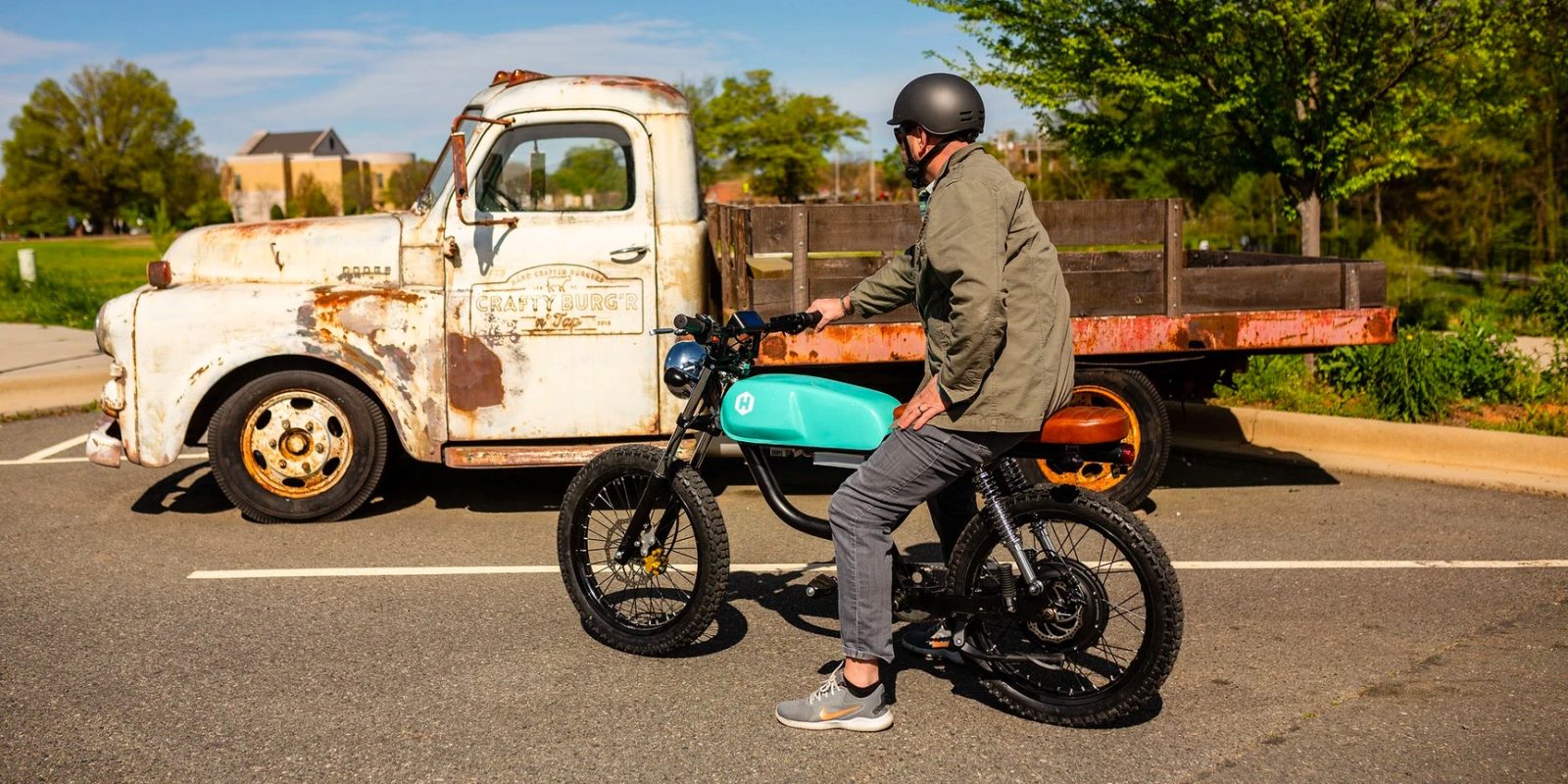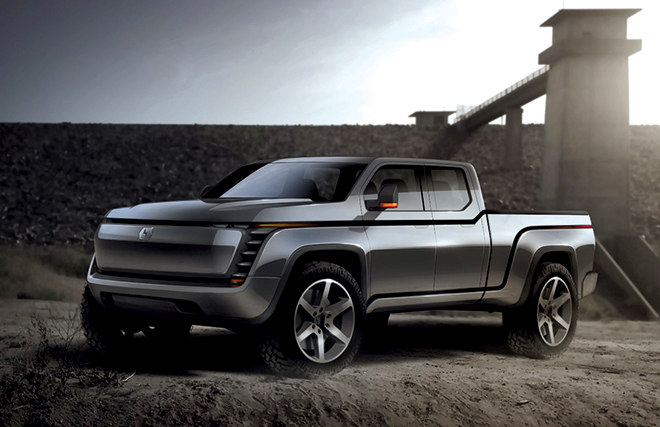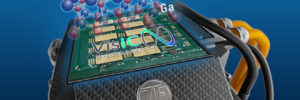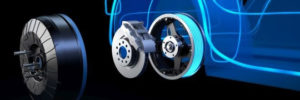It’s now a hybrid between the old dealer approach and full in-house like in the case of Tesla.
Source: Electric Vehicle News
BYD Announces Prices For Han Electric And Plug-In Hybrid In China
The all-electric version, after subsidies, starts from 240,000 yuan ($33,730), slightly above the PHEV version.
Source: Electric Vehicle News
Huck Cycle’s 60 mph electric mopeds get new VINs, paving way for legal riding

Electric mopeds are exploding in popularity, especially thanks to new models with higher speeds and power levels. As more electric moped startups begin producing the popular mini-EVs, legal questions have begun to stir about how and where these bikes can be ridden.
Their pedals might make them bicycle-like, but their motorcycle-level speeds and power can place them outside of standard e-bike regulations.
The post Huck Cycle’s 60 mph electric mopeds get new VINs, paving way for legal riding appeared first on Electrek.
Source: Charge Forward
Q-Reel Makes Charging Your Electric Car A Lighter, Easier, More Automated Job
Is the charging cable too heavy for you? These guys may have just the right solution.
Source: Electric Vehicle News
This Video Reveals Tesla's Hidden Upgrades And Improvements Over The Years
E For Electric demonstrates how busy Tesla’s been improving its cars.
Source: Electric Vehicle News
Mercedes-Benz EQS Prototype Spotted Still Under Heavy Camo
We’ve yet to see any revealing EQS prototypes, and we’re really looking forward to seeing one.
Source: Electric Vehicle News
VisIC partners with ZF to develop next-gen EV inverters
ZF Friedrichshafen and VisIC Technologies have announced a partnership to create a new generation of EV drivelines. The focus of the joint effort will be on 400-volt driveline applications, covering the largest segment of the EV market.
ZF specializes in wide-band-gap semiconductor technology, such as silicon carbide and gallium nitride. Gallium nitride semiconductors are thought to offer significant improvements in switching speed, as well as smaller and lighter package sizes.
“Our partnership with ZF for the development of gallium nitride-based power inverters in electric vehicles illustrates the breakthrough of gallium nitride technology in the automotive industry,” said VisIC CEO Tamara Baksht.
“We are pleased about the cooperation with VisIC, and are convinced that together we can further improve future electric drive systems based on gallium nitride technology,” says Dr. Dirk Walliser, Senior VP of R&D at ZF Friedrichshafen.
Source: VisIC Technologies
Source: Electric Vehicles Magazine
Average Lease Car Emissions Tumble In UK As More Customers Go Electric
Electric cars made up four percent of new lease cars in the final quarter of 2019.
Source: Electric Vehicle News
Lordstown announces exclusive licensing agreement with Elaphe for in-wheel hub motors
Lordstown Motors has announced an exclusive licensing agreement with Elaphe Propulsion Technologies. Elaphe will develop the in-wheel motor that will be used in Lordstown’s upcoming Endurance pickup truck—the motors will be built by Lordstown employees at the company’s Ohio headquarters.
Initial setup of the 20,000-square-foot production line has already begun. Lordstown will begin using the new lines for beta testing and pre-production vehicles within the next six months, and expects to get to full production capacity in about nine months. Elaphe will provide engineering support, technical assistance and consulting services throughout the project.
“Our relationship with Elaphe goes back over a decade, and their commitment to Lordstown Motors and passion for the Lordstown Endurance is stronger than ever,” said Steve Burns, Lordstown Motors CEO. “The caliber of work they’ve produced is some of the best and most innovative in the industry.”
“While most vehicle manufacturers are focusing merely on catching up and competing with legacy electric powertrain technologies pioneered decades ago by pure-EV OEMs, Lordstown is making a giant leap forward by building its vehicles around the needs of their users and not around the traditional powertrain-integration-imposed tradeoffs,” says Gorazd Lampič, Elaphe CEO. “We strongly believe that the packaging, modularity, redundancy and advanced functions of vehicle control that Elaphe hub motors enable are key to delivering torque in the way a true 4WD should be done.”
SEE ALSO: Retooling a shuttered factory to build electric trucks: Q&A with Lordstown Motors CEO Steve Burns

Source: Lordstown Motors
Source: Electric Vehicles Magazine
New Chinese wireless charging standard incorporates WiTricity’s technology
After years of development, China recently announced a new national standard for wireless EV charging. Wireless charging is expected to be an important enabler for autonomous vehicles, and standardization is critical to ensure that wireless charging is interoperable across different vehicles and charging equipment.
The new GuoBiao (GB) standard relies on technology developed by WiTricity, an MIT spin-out that was founded in 2007. WiTricity has been actively involved in the Chinese EV wireless charging standardization process for the past four years, working closely with the GB standard committee on several technical matters, including efforts to harmonize the Chinese standard with other international standards (SAE J2954, ISO 19363, IEC 61980) that will be published in 2020 and 2021.
WiTricity claims that its magnetic resonance technology delivers the same power, efficiency and charging rates as conventional plug-in charging methods.
“It’s a significant milestone for WiTricity to have our patented wireless charging technology embraced in the Chinese GB national standard,” said Alex Gruzen, WiTricity CEO. “China is the world’s largest EV market, the global EV trend setter, and a key market for WiTricity.”
Source: WiTricity
Source: Electric Vehicles Magazine




